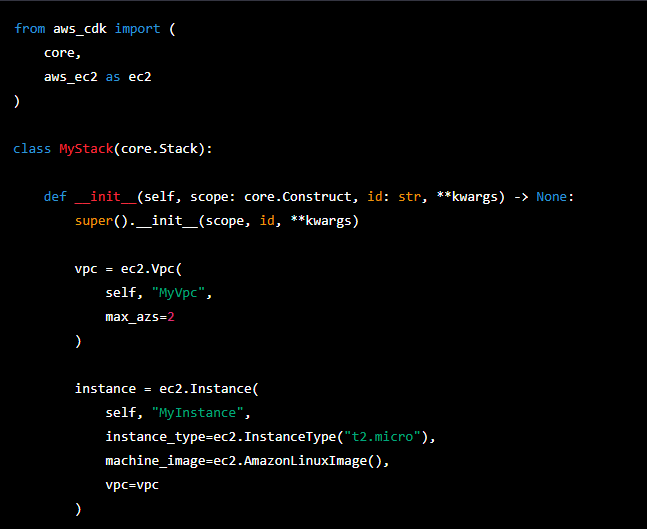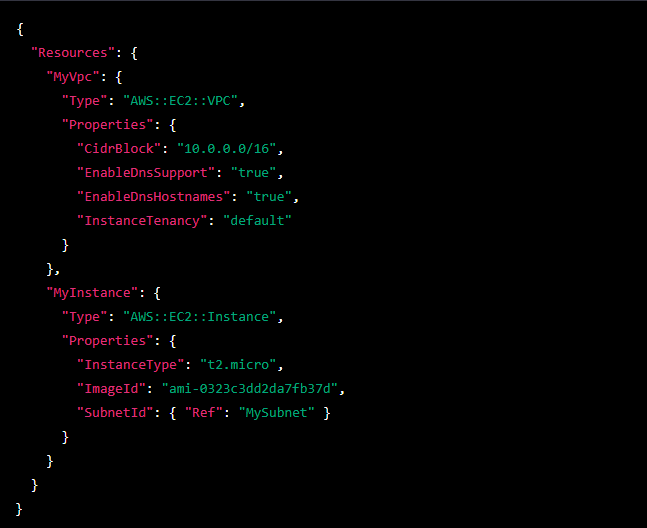How AWS CDK is Revolutionizing the Way Developers Build Cloud Applications
- Akash Sherkar
- Feb 15, 2023
- 4 min read
In recent years, there has been a growing trend towards the use of code to manage cloud infrastructure, and AWS CDK has emerged by cutting the mustard in this realm.
Amazon Web Services Cloud Development Kit (AWS CDK) is an open-source software development framework for specifying cloud infrastructure as code and providing it through AWS CloudFormation. It gives a high-level programming language, such as Python, JavaScript, TypeScript, or even Java, to write code for developing, deploying, and managing cloud infrastructure. In this article, I will spill the beans about how AWS CDK is revolutionizing the way cloud applications are being built, its benefits, AWS CDK vs CloudFormation, and many more.
AWS CDK provides better scalability and flexibility, decreased complexity and cost, and increased efficiency in cloud development. Additionally, it offers seamless integration with existing AWS services, easing the process for developers to use and maintain cloud applications. To manage AWS services including Amazon S3, Amazon EC2, Amazon RDS, and others, the framework also provides a selection of pre-built components and libraries. Since they can reuse pre-existing components and libraries rather than having to write new code every time, developers can create and deploy cloud infrastructure with less time and effort.
Key features and benefits of AWS CDK
AWS CDK (Cloud Development Kit) is beneficial since it enables you to define cloud infrastructure as code in a commonly used programming language. This simplifies the process and makes it more effective to develop, deploy, and maintain cloud apps since you can leverage high-level abstractions and provide and manage AWS resources with just a few lines of code. Also, CDK connects with other AWS tools and services, enabling a seamless development experience and allowing a wide range of features and functionality.
Here are some of the key features and benefits of AWS CDK:
Key Features | Benefits |
Multi-language support: Supports popular programming languages such as JavaScript, TypeScript, Python, Java, and C#. | Improved developer productivity: Provides an abstracted, high-level API that simplifies cloud resource creation and management. |
Reusable components: CDK constructs are pre-built modules of AWS CloudFormation templates, which can be composed to create custom cloud infrastructure. | Infrastructure automation: CDK automates repetitive tasks and reduces manual errors. |
Easy integration: Can be easily integrated with other AWS services and third-party tools. | Rapid prototyping: Enables developers to quickly and easily prototype cloud infrastructure. |
Infrastructure as code: The infrastructure is defined as code, enabling version control, testing, and collaboration. | Easy maintenance: The infrastructure defined as code can be easily updated and maintained. |
Cloud agnostic: CDK supports multiple cloud providers, not just AWS. | Improved collaboration: CDK allows teams to work together on infrastructure projects, enabling collaboration and faster delivery. |
How does AWS CDK Work?
AWS CDK's architecture and design are rooted in the idea of "constructs," which are pre-build cloud components that developers may use to define their infrastructure. These architectures are written using the programming language of choice and can be deployed to several projects. The AWS CDK interfaces with AWS resources using the AWS CloudFormation API, enabling usage of the same underlying AWS services and technologies as with CloudFormation.
AWS CDK functions by enabling you to define cloud infrastructure using high-level abstraction in code. The infrastructure is then deployed to the AWS Cloud using AWS CloudFormation templates, which are created from the code. The process begins by defining AWS resources and their properties in the code, and later deploying the code to the AWS Cloud. Git and npm are used to manage the versions of the AWS CDK code as well as the generated AWS CloudFormation templates.
The development process with AWS CDK generally includes the following steps:
Defining the AWS resources and their properties using the high-level abstractions in the code.
Compiling the code into AWS CloudFormation templates.
Deploying the code and AWS CloudFormation templates to the AWS Cloud.
Monitoring and managing the infrastructure using AWS CDK and the AWS Management Console.
Making changes to the code and redeploying the infrastructure as needed.
AWS CDK integrates with existing AWS services and provides constructs for many popular AWS services like Amazon S3, Amazon EC2, Amazon RDS, Amazon SNS, and many more. This enables you to utilize the capabilities and advantages of these services and employ them with ease in your infrastructure. The infrastructure provisioning process can also be extended and customized using the AWS CDK by writing custom code and enabling integration with other AWS services or other systems and tools.
AWS CDK vs CloudFormation
AWS CDK and CloudFormation are both AWS Infrastructure as Code (IAC) solutions that help developers to automate the deployment of AWS resources. However, I’ve found a few key differences between the two:
Language: AWS CDK incorporates popular programming languages such as Python, Java, and TypeScript, whereas, on the other hand, CloudFormation utilizes JSON or YAML. Leaving no stone unturned, AWS CDK is more versatile and allows you to leverage existing code and use the programming language of your choice.
Abstraction: AWS CDK gives a higher level of abstraction compared to CloudFormation. In other words, you can write less code to achieve the same end result. For example, you can use the AWS CDK EC2 construct to establish an EC2 instance in CloudFormation rather than writing JSON Code.
Debugging: You can easily identify and solve issues with the AWS CDK, as it offers better debugging support than CloudFormation.

Example of AWS CDK in Python

Example of CloudFormation in JSON
In short, Compared to CloudFormation, AWS CDK enables a more advanced and user-friendly way of automating AWS resource deployments. However, CloudFormation remains the more established and well-documented solution and perhaps a better choice for organizations that are already familiar with it and have an existing codebase.
As more organizations adopt cloud computing and the need for effective solutions for infrastructure automation grows, Amazon Web Services Cloud Development Kit (AWS CDK) is poised to continue growing. AWS CDK has the potential to emerge as a critical framework for cloud infrastructure management because it supports high-level programming languages, cloud service providers, and integration with other tools and services.
If you are looking to adopt AWS CDK, Vikasietum can help in understanding AWS CloudFormation and the AWS CDK construct library for different programming languages. For more information, email biz.info@vikasietum.com and see which one best fits your needs.


Comments